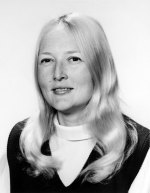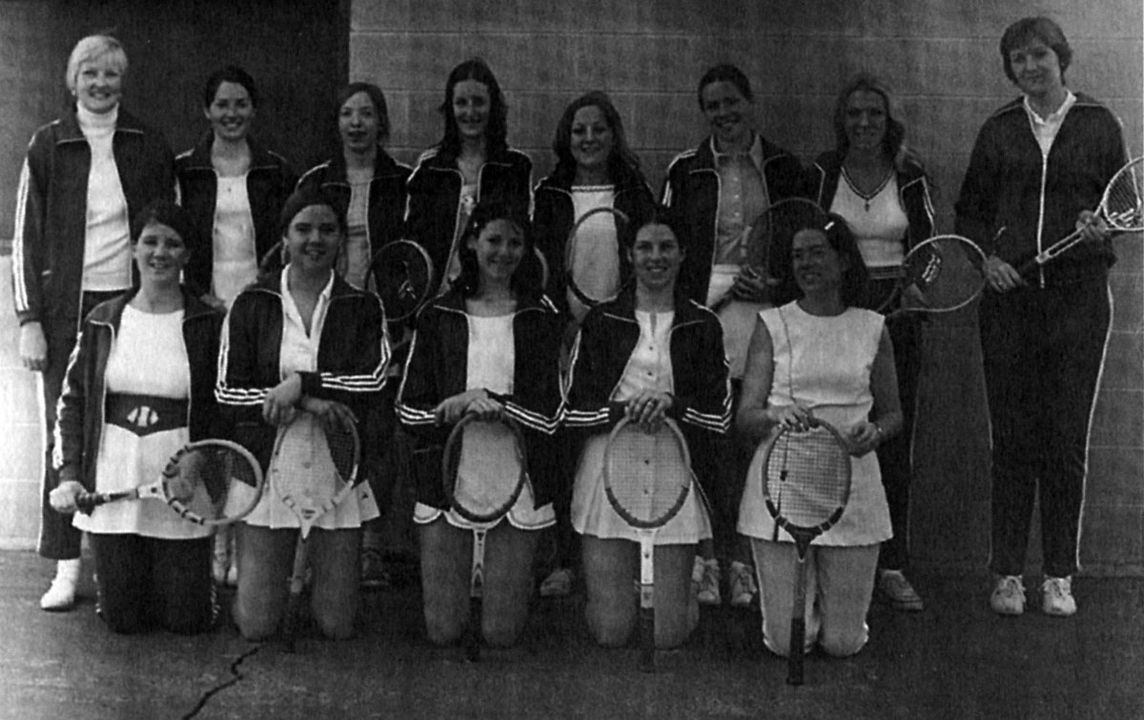Sept. 15, 2006
By: Ken Kleppel
Sit back, close your eyes, relax your head, take a deep breath, and dream.
Imagine you are an 18-year-old woman, entering Notre Dame as part of the first co-educational class in the University’s one hundred thirty year history. You are one of only 350 women on campus, and the opposite gender outnumbers you by a ratio of 17 to 1. Although you are welcomed, you still detect an undeniable tension between the sexes.
Imagine the year is 1972, and there is a social tsunami occurring around you with women’s liberation, sexual revolution, and displays of feminism–but you are more concerned with rallies, net play, and perfecting your backhand.
Imagine in the same year the federal government passes Title IX of the Educational Amendments to the Civil Rights Act of 1964. The relevant language reads: “No person shall, on the basis of sex, be excluded from participation in, be denied the benefits of, or be subjected to discrimination under any educational programs or activity receiving federal assistance.” Those thirty-two words will one day provide the margin of victory for your dream.
Imagine you play the sport you love and play it well enough to win–and you win often. Opportunities to compete at a higher level, however, are limited. At the end of the day, wins and losses on the court will not mean as much as wins and losses away from it.
Imagine you decide to form your own team, but you have no uniforms, issued equipment, transportation, or any funding whatsoever. You and your teammates sleep in vans or wake up at three o’clock in the morning to reduce the expenses incurred in traveling to away matches. While the interlocking “ND” cannot appear on the green warm-up jerseys with a white shamrock that your volunteer coach designed for you, the ideals of the University motivate your drive to succeed.
Imagine you petition the University to recognize this team with varsity status, so that it can achieve the support necessary for it to thrive, but you fail with each attempt.
Imagine that when the goal is finally attained, you have already graduated and never receive the accolades that accompany the success.
For Betsy Fallon, this was her dream and also her reality.
And accompanying Fallon in her pursuit of achieving varsity status for the women’s tennis team on campus were teammate Jane Lammers; athletic directors in charge of club sports Rich O’Leary and Tom Kelley; professor, coach, and most vocal advocate Dr. Carole Moore; volunteer coaches and classmates John Donahue, Tom Haywood, Dave Wheaton, and Joel Goebel; student manager Andrea Moore; and the program’s first head coach at the varsity level Cathy Cordes.
Collectively, the heroic efforts of these students, faculty, coaches, and administrators enabled women’s tennis to become Notre Dame’s first varsity women’s sport in 1976.
“We were able to make the sport what it really is–about individuals learning together and maximizing their potential and not strictly about winning and losing,” says Fallon. “It was truly a group of us that made this possible. Together, we were committed to our goal and we were happier and healthier as a result of our efforts.”
But while many indeed contributed, it is through the eyes of Fallon that the story is best told.
“Betsy is absolutely hands down the driving force behind women’s tennis at Notre Dame,” says Dr. Moore. “To recognize anybody else first is extremely short-sighted.”
And for the first time in these three sets, her match will finally be won.
First Set (Use photo 93b. here)
For a young woman growing up in Grand Rapids, Mich.,, playing tennis was more than just recreation but rather a pastime for Fallon. After all, she had been playing since primary school, and traveled with the Junior Wightman Cup teams and competed in many district and state tournaments as a teenager.
The opportunity to compete on the advanced level, however, abruptly ended once she enrolled as a freshman in 1972.
“I did not think about the fact that I would not play sports,” says Fallon. “To me, I chose Notre Dame because I received an academic scholarship and wanted to go to the best school possible. When I arrived, though, I was surprised that there was no structure to the sports women were playing on campus.”
When her bid to qualify for the men’s team failed, although she and eventual teammate Carol Simmons did win several matches in the tryout tournament, Fallon took the initiative to make a change.
Gathering interest from her classmates at meetings she conducted at Badin and Walsh Halls, Fallon created the Notre Dame Women’s Tennis Club. Although she did not receive sanctioned support from the University, Fallon scheduled her squad to compete against well-developed programs at nearby colleges and universities.
While many opponents were the beneficiaries of paid coaching, access to facilities, equipment, and uniforms, Fallon’s team enjoyed none of these advantages. But as the Notre Dame women learned to compete as a team, help was on the way as others shared Fallon’s dream.
Second Set (use photo 94a. here)
That spring, Fallon sought the assistance of Dr. Carole Moore, an assistant history professor at the University and one of Notre Dame’s first full-time female faculty members. Moore volunteered to handle scheduling, financing, and paperwork on behalf of the team, and served in this post for three years on a volunteer basis.
“I was taken back that there was no support for the women who played tennis,” says Dr. Moore, who today serves as a Professor of History, Technology, and Society, and a Special Assistant to the Vice Provost at the Georgia Institute of Technology. “I was anxious to take this on.”
Using her sway as faculty, Moore aggressively advocated the position of women on campus and in athletics. While her initial hurdle was to reserve court time for practice and play, her eventual challenge was to provide the necessary support to help the women overcome both logistical and social obstacles that prevented their growth as a team.
“From 1972 through 1976, it was incredibly difficult,” says Moore. “But the obstacles created camaraderie. A sense of leadership was forged in pursuit of their goal. If these women had not been as passionate and as proud of what they were accomplishing, nothing would have happened.”
In the fall of 1973, Jane Lammers, a freshman, joined the squad and competed with Fallon as No. 1 and No. 2 singles. The pair would co-captain the team for the next three years.
But they also thrived as a tandem away from the court. Together, they organized petition drives and fundraisers to increase awareness and develop funding. Lammers also founded the Women’s Athletics Association (“WAA”), a group comprised of the captains of the women’s club sport teams, to serve as a collective voice for the advancement of women’s athletics.
“We had to prove that we would be strong enough as a team to make it through competition,” says Lammers. “Then we would receive support.”
That support finally came, as the team’s request to receive club status from the University was granted in the spring of 1974. Although the $700.00 provided to the team marked the first instance of University support, the sum was grossly inadequate to meet the expenses the team would incur.
Fallon, and the others, fought onward.
Third Set
In the fall of 1975, Astrid Hotvedt, Notre Dame’s first women physical education instructor, helped arrange a meeting between the WAA and Dominic Napolitano, director of non-varsity sports, along with Athletic Director Moose Krause, Assistant Athletic Director Colonel John Stephens, and Executive Vice President Fr. Edmund Joyce. At that conference the WAA petitioned that women’s tennis, fencing, golf, and basketball receive varsity status. Attempts for all four sports failed.
Closely watching this historic encounter was Men’s Tennis Head Coach and Chairman of the Physical Education Department Tom Fallon.
“On the part of the administration, there was ignorance as to how far the women’s movement had come,” says Coach Fallon, who bears no relation to Betsy. “On the other side, you had several vigilant women who wanted immediate recognition.”
 |
With each letter from Moore petitioning for recognition and as a growing number of institutions began to comply with the requirements that Title IX imposed, the University was now aware just how far the movement had progressed in three years.
The momentum continued on the court, as well. In Fallon’s senior year, the Club added 18 members, including six freshmen, defeated rival St. Mary’s College, and finished second at the Ball State Invitational, by virtue of wins over DePauw, Ball State, and Indiana State.
Fallon graduated in the May 1976. For her efforts, she received a Plaque of Appreciation at the WAA Honors Banquet in what would be her farewell celebration.
The tennis team would play its first match as a varsity unit four months later.
Match (94b. please make sidebar of Fallon letter here)
That fall, Cathy Cordes, from an applicant pool of two hundred, was appointed the varsity team’s first head coach. Cordes led the Irish to a 7-3-1 record in its maiden season, in which she hosted the Notre Dame Tennis Tournament and the Irish Invitational to showcase her program. Lammers, appropriately enough, served as the team’s first captain, and along with Mary (Shukis) Behler would win the program’s first monograms.
“Everything that we were did as a team was important to establish credibility,” says Cordes, who became athletic director at St. Mary’s College after her first season at Notre Dame. “Everybody was very welcoming and we had a lot of support from the Athletic Department.”
After one year of service in the Jesuit Volunteer Corps, Fallon moved to Chicago and earned a masters degree in business administration from Northwestern University. For the past 30 years, she has worked in hospital administration and health care. Today, she is the Vice President of Marketing and Planning for Brooks Rehabilitation in Jacksonville, Florida, is married to former professional player Cecil Mella, and is a proud mother.
As Fallon prospered, so too did the program she fought so valiantly to create.
Today, women’s tennis is fully-funded and receives the maximum number of scholarships allowed by the NCAA. Over the course of the past 30 years, a total of eight Division I and two Division II All-Americans have competed in pacing the squad to eighteen conference championships and appearances in eleven straight NCAA tournaments.
“What women learn through athletics helps them be successful throughout life,” says Fallon. “You will always face challenges. Athletics teaches you how to react these, and how to deal with success when you achieve it. Women’s sports keep that balance and Notre Dame still graduates kids that exemplify it.”
While the record books may begin in 1976, Fallon’s efforts–and those of each individual referenced above, among others–will not be forgotten.
There is no more need to imagine. The match is over, and it belongs to Betsy.







